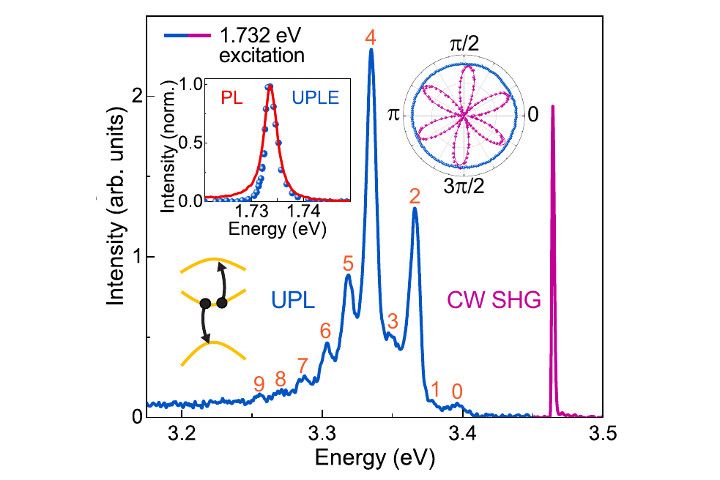
Nature Communications
Monolayer transition-metal dichalcogenides (TMDCs) show a wealth of exciton physics. Here, we report the existence of a new excitonic species, the high-lying exciton (HX), in single-layer WSe2 with an energy of ~3.4 eV, almost twice the band-edge A-exciton energy, with a linewidth as narrow as 5.8 meV. The HX is populated through momentum-selective optical excitation in the K-valleys and is identified in upconverted photoluminescence (UPL) in the UV spectral region. Strong electron-phonon coupling results in a cascaded phonon progression with equidistant peaks in the luminescence spectrum, resolvable to ninth order. Ab initio GW-BSE calculations with full electron-hole correlations explain HX formation and unmask the admixture of upper conduction-band states to this complex many-body excitation. These calculations suggest that the HX is comprised of electrons of negative mass. The coincidence of such high-lying excitonic species at around twice the energy of band-edge excitons rationalizes the excitonic quantum-interference phenomenon recently discovered in optical second-harmonic generation (SHG) and explains the efficient Auger-like annihilation of band-edge excitons.
https://www.nature.com/articles/s41467-021-25499-2
https://www.uni-regensburg.de/pressearchiv/pressemitteilung/1111172.html
SFB 1277
Doris Meier
Universität Regensburg
Phone: +49 (0) 941-943 2264
Email: SFB1277.Office@ur.de